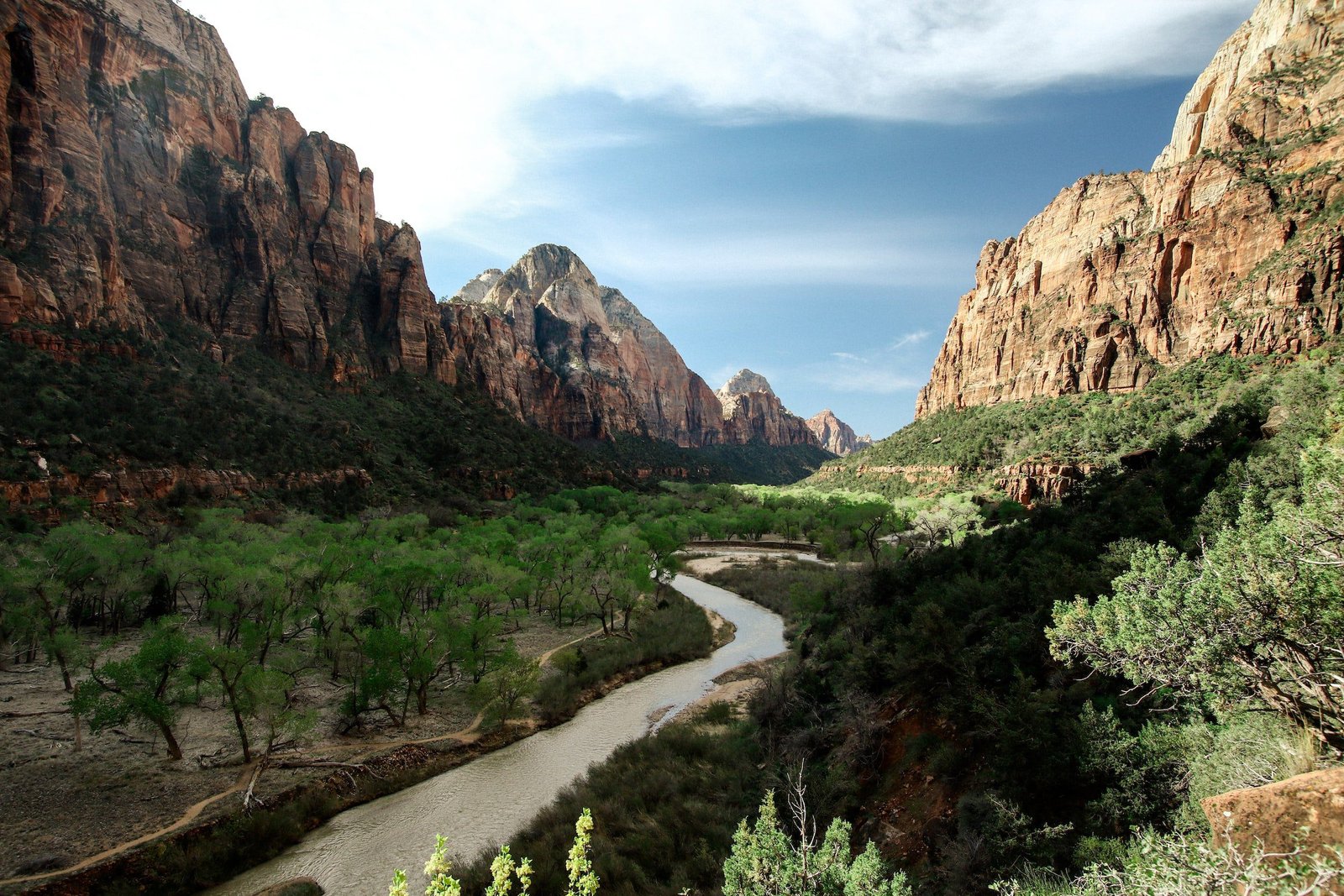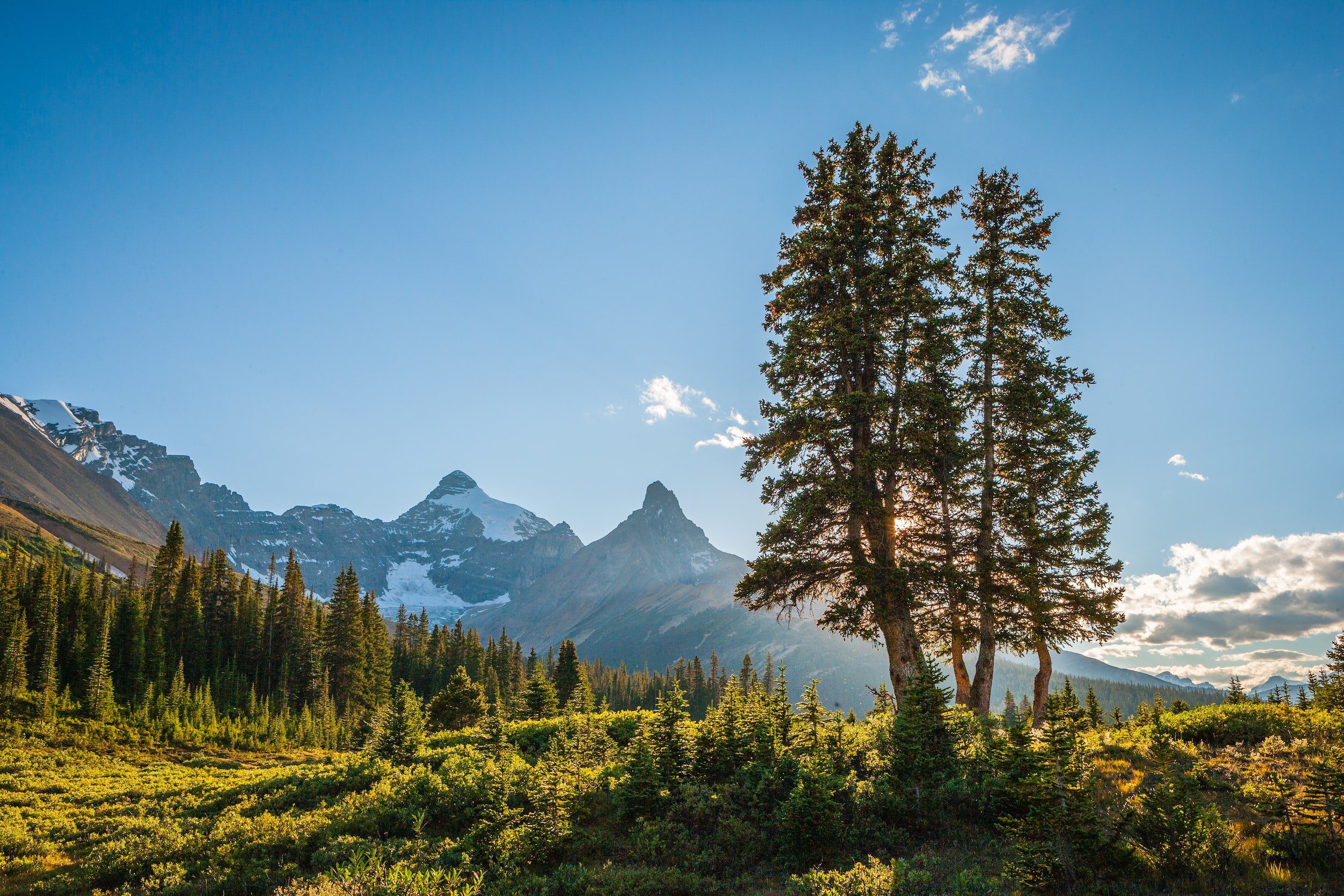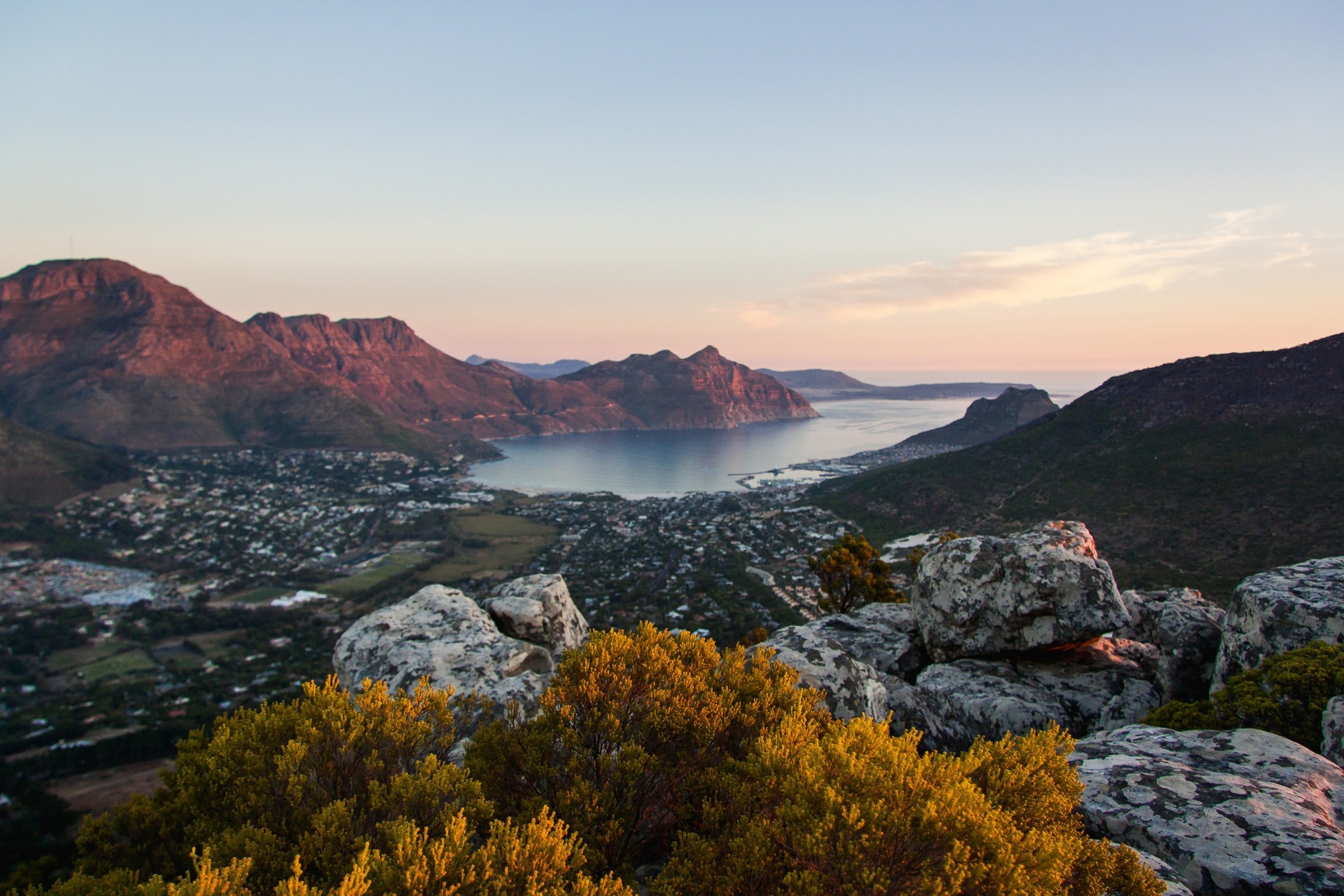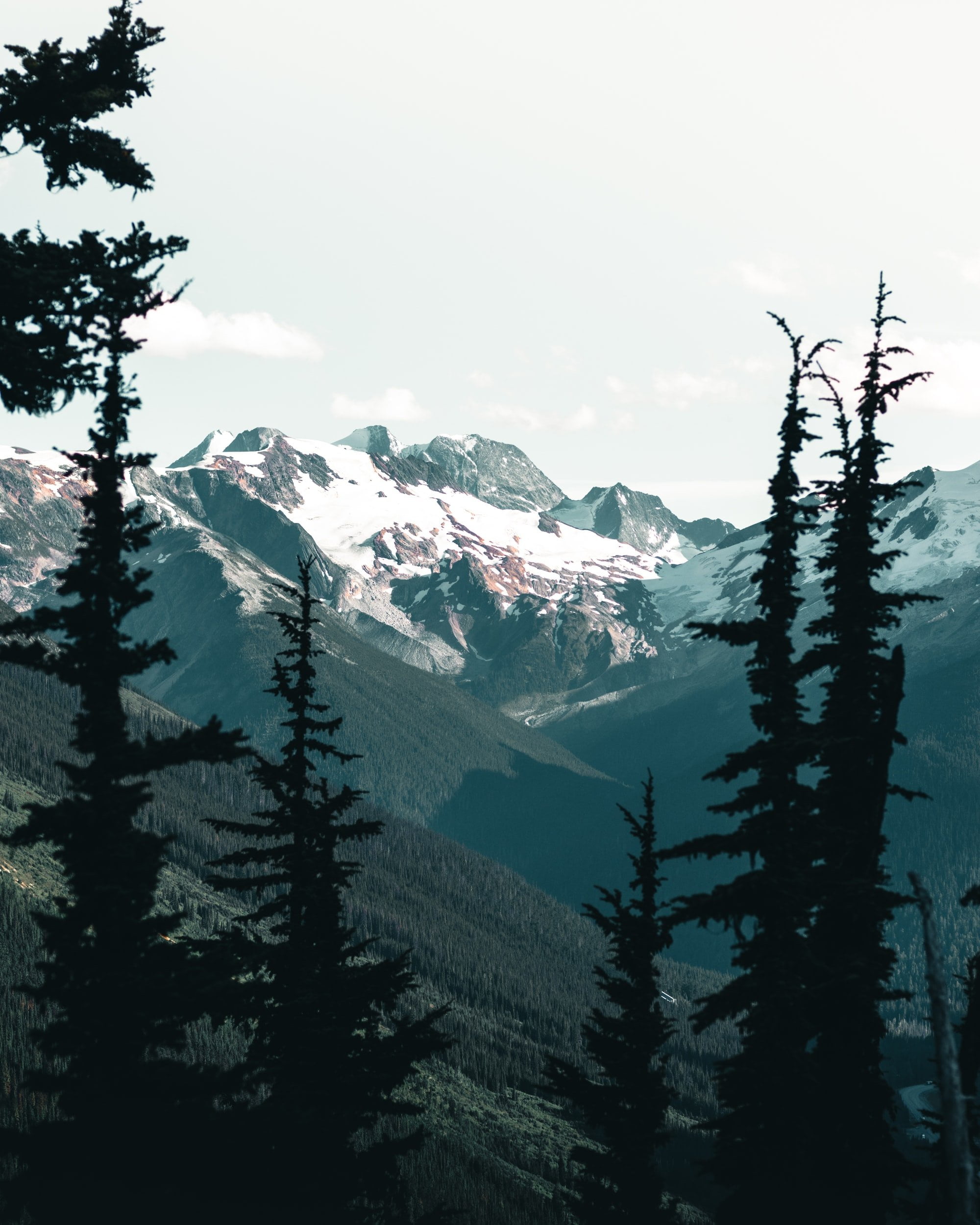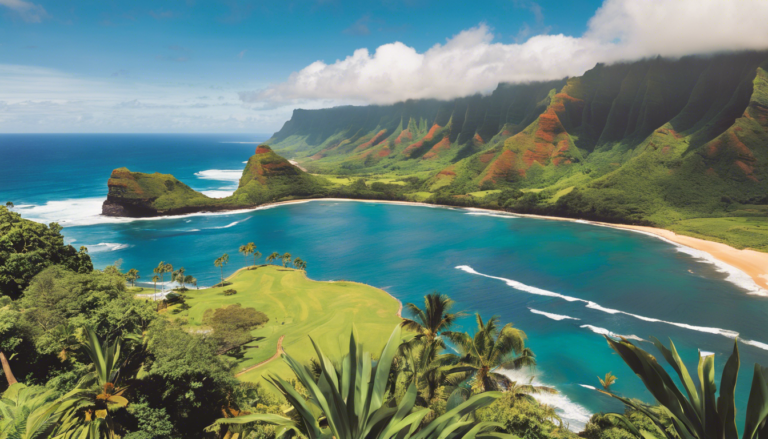Canada’s national parks stand as some of the most breathtakingly beautiful natural wonders on the planet, leaving visitors in awe and wonder. With 48 national parks and reserves waiting to be explored, US tourists can easily immerse themselves in nature’s splendour during their next adventure. This in-depth piece will examine why US visitors should seriously consider Canada’s national parks over their American counterparts. We will also compare and contrast the Canadian and American national parks while highlighting the must-see attractions that will leave any nature lover speechless.
Why US tourists should consider visiting Canada’s national parks
Canada’s national parks are widely recognized for their diverse topography and unparalleled exquisiteness. These natural reserves range from the Rocky Mountains’ soaring peaks to the Pacific Rim’s jagged coastlines, providing many activities and spectacles for everyone to relish. American visitors who visit these national parks will be blessed to explore some of the most pristine and unspoiled natural habitats, come across diverse fauna and flora, and indulge in various outdoor pursuits.
Furthermore, the national parks in Canada are generally less congested than their American counterparts, thus allowing visitors to experience a serene and immersive escape from the bustle of daily life. American tourists can steer clear of the teeming masses and take pleasure in the pure splendour of Canada’s national parks without any sense of urgency or intimidation.
Overview of Canada’s national park system
Canada’s remarkable national park system was founded in 1885 with the establishment of Banff National Park, which stands as the country’s first national park and the third in the world. Since then, the network has burgeoned to encompass an impressive 48 national parks and reserves, spanning an area of over 328,198 square kilometres of land and water.
Parks Canada, a federal agency that safeguards and preserves the natural and cultural legacy of the nation, manages Canada’s national parks. This organization endeavours to protect the ecological coherence of the parks while simultaneously providing visitors with opportunities to partake in and learn about Canada’s natural and cultural history. Through various programs and initiatives, Parks Canada has cultivated a reputation for maintaining the exceptional beauty of these protected areas and educating visitors about the significance of preserving them for future generations.

Comparison with US national parks
Although Canada and the US national parks exhibit many parallels, they have distinct differences. Notably, Canada’s national parks need to be developed and equipped with fewer facilities than their US counterparts, making them both a boon and a bane, depending on what visitors seek.
Another significant point of divergence is the fauna. While both countries boast an impressive array of wildlife, Canada’s national parks house some unique and exclusive species, such as caribou, polar bears, and grizzly bears. Witnessing these creatures in their natural habitat could be an unforgettable, once-in-a-lifetime experience for US tourists who explore Canada’s national parks.
Exploring the Enigmatic Beauty of Canadian National Parks
Nestled in the heart of the majestic Rocky Mountains lies the renowned Banff National Park, a captivating destination that enthrals adventurers and nature enthusiasts alike. With its awe-inspiring alpine vistas, unparalleled hiking trails, and an array of outdoor pursuits, this iconic park is a veritable paradise for those seeking to immerse themselves in the splendour of the Canadian wilderness.
Jasper National Park, famed for its crystalline lakes and colossal glaciers, is another jewel in Canada’s national park system. A haven for nature lovers, this pristine wilderness offers a breathtaking symphony of nature’s wonders, from its serene lakes that reflect the azure skies to its ancient rainforests teeming with life. A visit to Jasper National Park is an unparalleled experience, a chance to revel in the raw beauty of nature in all its splendour.
For those seeking an untamed coastal adventure, the Pacific Rim National Park Reserve on the rugged west coast of Vancouver Island is a haven of awe-inspiring vistas and ancient forests shrouded in mist. This untamed wilderness is a treasure trove of breathtaking ocean panoramas that captivate the soul, where the rhythmic crashing of waves against the rocky shores creates a mesmerizing symphony. The marine wildlife that inhabits these waters, from majestic whales to playful sea otters, adds to the allure of this coastal gem.
On the eastern shores of Canada lies the Gros Morne National Park, a rugged and enigmatic landscape that beckons adventurers to explore its mysteries. With its dramatic coastline carved by time, towering cliffs that defy gravity, and ancient fjords that tell tales of the Earth’s history, Gros Morne National Park is a living testament to the raw power and beauty of nature. A journey into this primal wilderness is a transcendental experience where one can witness the relentless forces that have shaped our planet over aeons.
Tucked away on the shores of Lake Huron, the Bruce Peninsula National Park is a hidden gem that offers a world of underwater wonders. This park is a haven for aquatic adventurers with some of the most pristine freshwater snorkelling and scuba diving opportunities. Its stunning rock formations that rise majestically from the turquoise waters, and its serene hiking trails that wind through its verdant forests, make it a paradise for nature enthusiasts and adventure seekers alike.
The Canadian national parks, mesmerizing landscapes, and untamed wilderness offer a captivating escape into the heart of nature’s wonders. From the alpine vistas of Banff National Park to the rugged coastal allure of Pacific Rim National Park Reserve, and from the enigmatic cliffs of Gros Morne National Park to the underwater marvels of Bruce Peninsula National Park, these natural wonders are a testament to the splendour and diversity of Canada’s rich wilderness heritage. A journey to these iconic parks is an unforgettable odyssey, a chance to immerse oneself in the sheer magnificence of the Canadian wilderness and create lasting memories that will endure for a lifetime.
Banff National Park Guide

Nestled in the heart of the awe-inspiring Canadian Rockies, Banff National Park is a treasured UNESCO World Heritage Site that boasts over 6,600 square kilometres of untouched natural beauty. The park’s breathtaking vistas will surely leave visitors awestruck, from the grandeur of towering peaks to the serenity of picturesque lakes and enchanting alpine meadows.
Our guide delves into the beautiful world of Banff National Park, from its strategic location to the top attractions that captivate the hearts of all who venture here. Whether you’re a seasoned traveller or a curious first-timer, we’ve covered you with insider tips, the best times to visit, top-notch accommodation options, exhilarating activities, and captivating photography opportunities.
So come and explore the wonders of Banff National Park with us and discover the true essence of this extraordinary wilderness gem.
Location and Background
Banff National Park is situated in Alberta, Canada, approximately 120 km west of Calgary. It was established in 1885 as Canada’s first national park to protect the area’s natural beauty. Today, the park receives over four million visitors annually, making it one of Canada’s most popular tourist destinations.
InformationTop Attractions in the Park
Banff National Park is a destination that promises many awe-inspiring attractions to enthral visitors from all walks of life. Among its myriad natural wonders, Lake Louise reigns supreme with its tranquil turquoise waters and striking mountain vistas. Likewise, Moraine Lake captivates visitors with its clear waters and awe-inspiring surroundings.
If you’re planning a trip to Banff National Park, here are a few insider tips to keep in mind:
Bring warm clothing: Even in the summer, temperatures in the park can be cool, so it’s essential to bring warm clothing.
Book accommodations early: The park is a popular destination, so booking your accommodations well in advance is a good idea.
Plan your activities: With so much to see and do in the park, planning your activities ahead of time is essential to make the most of your visit.
Be bear aware: Banff National Park is home to black and grizzly bears, so it’s essential to be mindful of your surroundings and take appropriate precautions.

Best Times to Visit Banff
The best time to visit Banff National Park depends on your interests. If you’re interested in winter sports like skiing and snowboarding, the best time to visit is between November and April. For hiking and other outdoor activities, the best time to visit is between June and September when the weather is warmest. Remember that the park can be busy during peak season, so planning and booking accommodations early is essential.
Accommodation Options
Hotels and resorts
When it comes to accommodation options, Banff National Park provides a variety of choices to cater to every traveller’s needs. Several hotels and resorts are available within the park for luxury and comfort, including the renowned Banff Springs Hotel and the Fairmont Chateau Lake Louise.
Campgrounds
On the other hand, for travellers looking for a more economical option, there are several campgrounds, such as Tunnel Mountain and Two Jacks Lakeside, which provide a more affordable accommodation option while still allowing visitors to enjoy the park’s natural beauty.
Backcountry camping
Backcountry camping is available in designated areas throughout the park for adventurous travellers who wish to immerse themselves in the wilderness.
Activities and Experiences
Nestled within the Canadian Rockies, Banff National Park presents its visitors with various offerings and experiences. Its extensive network of trails, stretching across a staggering 1,600 km, caters to the discerning hiker’s appetite, serving as an idyllic haven for enthusiasts of the sport. The park also has a vibrant wildlife ecosystem, housing many creatures, such as the awe-inspiring grizzly bears, majestic elks, and agile mountain goats.
For ardent winter sports enthusiasts, Banff National Park is an excellent destination, providing many options for skiing and snowboarding. Within the park’s bounds lie several top-notch ski resorts, attracting enthusiasts from all corners of the globe. Moreover, the park boasts natural hot springs, including the Banff Upper Hot Springs and Radium Hot Springs. Visitors can submerge themselves in the mineral-rich waters, leaving their worries behind.
Banff National Park is a place of awe-inspiring beauty, where nature’s treasures thrive, and visitors can revel in its offerings, each bound to evoke a sense of wonder and amazement.
Jasper National Park
Plan and book accommodations and activities in advance, especially during peak season.
Bring warm clothing and gear for outdoor activities, as temperatures can be calm even in the summer.
Drive cautiously and be aware of wildlife on the roads.
Take advantage of the free shuttle service in the park to reduce traffic congestion.
Best Times to Visit
The best times to visit Jasper National Park are from late spring to early fall. The park is busiest during summer, but the fall offers stunning fall foliage and fewer crowds. Winter is also a great time to visit for winter sports enthusiasts.
Accommodation Options
Jasper National Park has various accommodation options, including campgrounds, lodges, and hotels. There are also several backcountry camping options for those who want a more rugged experience. It is important to book accommodations in advance, especially during peak season.
Activities and Experiences
Jasper National Park offers a wide range of activities and experiences for visitors. Here are some of the top things to do:
Hiking: The park has over 1,000 trails ranging from easy to complex.
Wildlife Watching: The park is home to various wildlife, including grizzly bears, black bears, elk, and bighorn sheep.
Canoeing/Kayaking: The park has several lakes and rivers perfect for paddling.
Skiing/Snowboarding: The park has several ski resorts that offer world-class skiing and snowboarding.
Stargazing: The park is a designated Dark Sky Preserve, making it a perfect spot for stargazing.
Photography and Visuals
Jasper National Park is a photographer’s paradise. The park offers stunning landscapes, abundant wildlife, and unique geological formations. Here are some of the top spots for photography:
· Spirit Island on Maligne Lake
· Athabasca Glacier
· Pyramid Mountain
· Medicine Lake
· Mount Edith Cavell
Gros Morne National Park

Gros Morne National Park is a stunning destination in western Newfoundland, Canada. Covering an area of 1,805 square kilometres, it was designated as a UNESCO World Heritage Site in 1987 due to its outstanding geological features and scenic beauty. The park offers many activities and experiences for nature enthusiasts and adventure seekers, making it an ideal destination for all travellers.
Location and Background Information
Gros Morne National Park is located on the west coast of Newfoundland, Canada, near Rocky Harbour. It was established in 1973 to protect the unique geology and ecology of the area. The park is named after the towering Gros Morne Mountain, the second-highest peak in Newfoundland, at 806 meters above sea level.
The park is home to a diverse range of wildlife, including moose, caribou, black bears, and various species of birds. It also features fjords, mountains, forests, beaches, and waterfalls, making it a photographer’s paradise.
Top Attractions in the Park
Western Brook Pond: This fjord is one of the park’s most popular attractions. Visitors can take a boat tour through the fjord, surrounded by cliffs and cascading waterfalls.
Gros Morne Mountain: This towering peak offers stunning views of the park and the surrounding area. It is a challenging hike, but the view from the top is worth it.
Tablelands: This unique geological feature is a rare earth mantle exposure. Visitors can hike through this barren landscape, which looks like something out of a science fiction movie.
Green Gardens: This trail leads to a beautiful beach where visitors can relax and enjoy the scenery. The course also passes through a meadow filled with wildflowers and offers stunning coastline views.
Insider Tips and Recommendations
Dress in layers, as the weather can be unpredictable and change quickly.
Bring sturdy hiking shoes, as the terrain can be rugged.
Take a guided tour to learn about the park’s geology and ecology.
Bring a camera to capture the stunning scenery.
Best Times to Visit
The best time to visit Gros Morne National Park is from late May to early September, when most park facilities are open, and the weather is mild. However, visitors should be prepared for rain and cool temperatures, especially in the evenings.
Accommodation Options
Several accommodation options within the park include campgrounds, cabins, and lodges. Visitors can also stay in nearby towns such as Rocky Harbour and Norris Point.
Activities and Experiences
Hiking: The park has over 100 trails ranging from easy walks to challenging multi-day hikes.
Boating: Visitors can take a boat tour of Western Brook Pond or explore the coastline by sea kayak.
Wildlife Viewing: The park is home to various wildlife, including moose, caribou, and black bears.
Interpretive Programs: The park offers a range of guided tours and educational programs to help visitors learn about the park’s geology, ecology, and cultural heritage.
Pacific Rim National Park Reserve

Pacific Rim National Park Reserve is a stunning destination located on the west coast of Vancouver Island, British Columbia, Canada. The park encompasses over 500 square kilometers of land and sea and is home to some of the most spectacular natural scenery in the world. With its pristine beaches, rugged coastline, and lush rainforests, Pacific Rim National Park Reserve is a paradise for nature lovers and outdoor enthusiasts.
Location and Background Information
Pacific Rim National Park Reserve is located on the west coast of Vancouver Island, British Columbia, Canada. It was established in 1970 to protect the region’s unique ecosystems and cultural heritage. The park has three distinct areas: Long Beach, the West Coast Trail, and the Broken Group Islands.
The park is home to diverse wildlife, including sea otters, whales, bears, and bald eagles. It is also a cultural hub for the First Nations communities of the region, who have lived in the area for thousands of years.
Top Attractions in the Park
Long Beach: This 16-kilometer stretch of sandy beach is one of the park’s most popular attractions. Visitors can enjoy surfing, swimming, beachcombing, and relaxing on the sand.
West Coast Trail: This rugged 75-kilometer hiking trail is among the world’s most challenging and rewarding hikes. It takes hikers through old-growth rainforests, rocky coastlines, and suspension bridges.
Broken Group Islands: This cluster of over 100 small islands is a paddler’s paradise. Visitors can explore the islands by kayak, canoe, or sailboat and enjoy the pristine wilderness and abundant wildlife.
Insider Tips and Recommendations
Bring warm, waterproof clothing, as the weather can be unpredictable.
Take a guided tour to learn about the park’s ecology and cultural heritage.
Respect the park’s wildlife and leave no trace of your visit.
Check the tides and weather conditions before embarking on any outdoor activities.
Best Times to Visit
The best time to visit Pacific Rim National Park Reserve is from May to September, when most park facilities are open and the weather is mild. However, visitors should be prepared for rain and cool temperatures, especially in the evenings.
Accommodation Options
Several accommodation options within the park include campgrounds, backcountry campsites, and rustic cabins. Visitors can also stay in nearby towns such as Tofino and Ucluelet, which offer a range of hotels, motels, and vacation rentals.
Activities and Experiences
Hiking: The park offers over 50 hiking trails, ranging from easy walks to challenging multi-day hikes.
Beachcombing: Visitors can explore the park’s pristine beaches and discover treasures washed up by the ocean.
Wildlife Viewing: The park is home to various wildlife, including sea otters, whales, and bears.
Kayaking: Visitors can explore the park’s coastal waters and islands by kayak, canoe, or paddleboard.
Fundy National Park

Fundy National Park is a stunning natural destination in New Brunswick, Canada. The park encompasses over 200 square kilometers of land and sea and is home to some of the most spectacular natural scenery in the world. With its rugged coastline, dense forests, and stunning waterfalls, Fundy National Park is a paradise for nature lovers and outdoor enthusiasts.
Location and Background Information
Fundy National Park is located on the Bay of Fundy in New Brunswick, Canada. It was established in 1948 to protect the region’s unique ecosystems and cultural heritage. The park is known for its dramatic tides, the highest in the world, and can rise to 16 meters in height.
The park has diverse wildlife, including moose, black bears, and bald eagles. It is also a cultural hub for the Mi’kmaq First Nations communities of the region, who have lived there for thousands of years.
Top Attractions in the Park
Hopewell Rocks: These stunning rock formations are a must-see attraction in the park. Visitors can explore the rocks at low tide and marvel at their unique shapes and sizes.
Fundy Trail Parkway: This scenic drive offers stunning views of the Bay of Fundy and the park’s rugged coastline. Visitors can stop at several lookout points and hiking trails along the way.
Dickson Falls: This stunning waterfall is a popular hiking destination in the park. Visitors can follow the trail through the forest to the base of the falls and enjoy the serene beauty of the surroundings.
Insider Tips and Recommendations
Check the tide schedules before visiting the Hopewell Rocks and plan accordingly.
Bring warm clothing and rain gear, as the weather can be unpredictable.
Take a guided tour to learn about the park’s ecology and cultural heritage.
Respect the park’s wildlife and leave no trace of your visit.
Best Times to Visit
The best time to visit Fundy National Park is from June to September, when most park facilities are open and the weather is mild. However, visitors should be prepared for rain and cool temperatures, especially in the evenings.
Accommodation Options
Several accommodation options within the park include campgrounds, backcountry campsites, and rustic cabins. Visitors can also stay in nearby towns such as Alma and Saint John, which offer a range of hotels, motels, and vacation rentals.
Activities and Experiences
Hiking: The park offers over 120 hiking trails, ranging from easy walks to challenging multi-day hikes.
Beachcombing: Visitors can explore the park’s beaches and discover treasures washed up by the ocean.
Wildlife Viewing: The park has various wildlife, including moose, black bears, and bald eagles.
Sea Kayaking: Visitors can explore the park’s coastal waters and see the stunning cliffs and caves from the water.
Cape Breton Highlands National Park
Cape Breton Highlands National Park is a stunning natural destination on the northern tip of Cape Breton Island in Nova Scotia, Canada. The park covers over 950 square kilometers of land and sea and is home to some of the most breathtaking natural scenery in the world. Cape Breton Highlands National Park is a paradise for nature lovers and outdoor enthusiasts with its rugged coastline, rolling hills, and dense forests.
Location and Background Information
Cape Breton Highlands National Park is located on the northern tip of Cape Breton Island in Nova Scotia, Canada. It was established in 1936 to protect the region’s unique ecosystems and cultural heritage. The park is known for its stunning scenery, including the Cabot Trail, which is considered one of the most scenic drives in the world.
The park has diverse wildlife, including moose, black bears, and bald eagles. It is also a cultural hub for the Mi’kmaq First Nations communities of the region, who have lived there for thousands of years.
Top Attractions in the Park
Cabot Trail: This 298-kilometer scenic drive is a must-see attraction in the park. Visitors can enjoy stunning coastline views and mountains and stop at several lookout points and hiking trails.
Skyline Trail: This iconic hiking trail offers stunning views of the park’s rugged coastline and rolling hills. Visitors can follow the path to the top of the mountain and enjoy panoramic views of the surrounding landscape.
Fishing: The park is home to several rivers and streams that offer excellent fishing opportunities for salmon and trout.
Insider Tips and Recommendations
Plan and book accommodations and activities in advance, as the park can get crowded during peak season.
Bring warm clothing and rain gear, as the weather can be unpredictable.
Take a guided tour to learn about the park’s ecology and cultural heritage.
Respect the park’s wildlife and leave no trace of your visit.
Best Times to Visit
The best time to visit Cape Breton Highlands National Park is from late May to early October, when most park facilities are open and the weather is mild. However, visitors should be prepared for rain and cool temperatures, especially in the evenings.
Accommodation Options
Several accommodation options within the park include campgrounds, backcountry campsites, and rustic cabins. Visitors can also stay in nearby towns such as Chéticamp and Ingonish, which offer a range of hotels, motels, and vacation rentals.
Activities and Experiences
Hiking: The park offers over 20 hiking trails, from easy walks to challenging multi-day hikes.
Wildlife Viewing: The park is home to various wildlife, including moose, black bears, and bald eagles.
Fishing: The park’s rivers and streams offer excellent fishing opportunities for salmon and trout.
Whale Watching: Visitors can take a boat tour to see the park’s resident whales and other marine wildlife.
Final thoughts on the importance of visiting national parks in Canada:
Visiting Canada’s national parks is an unparalleled opportunity to immerse oneself in its pristine natural beauty and experience its rich cultural heritage. With over 40 national parks to explore, each offering unique landscapes, wildlife, and recreational activities, there is no shortage of adventure. But beyond the personal benefits of travel and adventure, visiting Canada’s national parks also helps support conservation efforts and protects these precious natural spaces for future generations.
When visitors explore the vast wilderness of Canada’s national parks, they connect with nature in a way that can be transformative. They experience awe-inspiring vistas, connect with wildlife, and develop a deeper appreciation for the natural world. This type of immersive travel is enriching and positively impacts our overall well-being. It helps us to disconnect from the fast pace of modern life, reconnect with ourselves, and gain a greater perspective on the world around us.
Moreover, visiting Canada’s national parks also supports conservation efforts and contributes to preserving these natural spaces for future generations. By paying park fees and supporting local businesses, visitors help to fund conservation programs and infrastructure improvements. This helps ensure that these parks can continue to offer unparalleled opportunities for adventure and exploration while preserving their ecological and cultural significance.
In short, visiting Canada’s national parks offers an incredible opportunity to connect with nature, gain perspective, and contribute to conservation efforts. It is an experience that is not to be missed and one that will leave a lasting impression on those who undertake it.
Additional resources for planning a trip to Canada’s national parks:
Planning a trip to Canada’s national parks can be an overwhelming experience, but there are many resources available to help make the process easier. Here are a few that may be helpful:
Parks Canada website: The official website for Parks Canada offers a wealth of information on each national park, including park activities, accommodations, and fees.
Destination Canada: The official tourism website for Canada offers information on travel requirements, activities, and attractions across the country.
Local tourism boards: Each national park is located within a larger region, and many local tourism boards offer information on nearby attractions, accommodations, and activities.
Travel blogs and forums: Travel blogs and forums can offer firsthand accounts of visiting Canada’s national parks, including tips and recommendations from other travelers.
Using these resources, travelers can better plan their trip to Canada’s national parks and ensure a memorable and rewarding experience.

